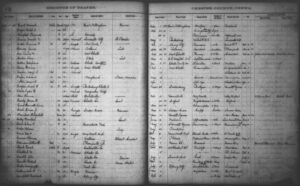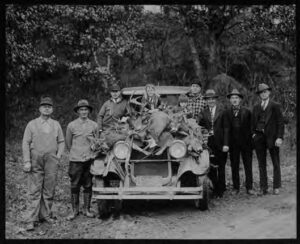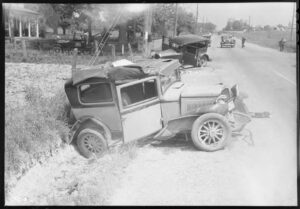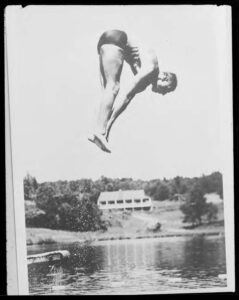Making Moves: Pennsylvania State Archives Digitizes Collections, Preps for New Archive Space
About six years ago, the Harrisburg-based State Archives began the design of a new building. The purpose of the new space was to allow for a better meeting of proper archival and environmental standards with modern temperature and humidity controls and expanded record storage space.
As the Fall 2022 grand opening nears, the State Archives staff – acting under the umbrella of the Pennsylvania Historical & Museum Commission and led by division chief, David Shoff – have been busy cataloging, packing and preparing 78,000 cubic feet of media collections for a move to the new facility. Rather than moving boxes and bringing over a case of Yuengling (although that surely would have been appreciated), The Crowley Company assisted the Archives with a key initiative to digitize approximately 30,000 microfilm rolls and several photographic collections before the official opening of the new building.
How Did We Get All This Stuff?
- In the 1950s, vital paper records – such as marriage, death and birth certificates – were captured onto microfilm as a way to preserve the information onto a long-lasting storage media. Microfilm, when stored properly, can potentially last up to 500 years. This effort resulted in 12,000 rolls of in-house records before microfilm creation was halted in the early 2000s.
- Between the 1970s and 1980s, a majority of the counties in Pennsylvania took advantage of an offer by the Church of Jesus Christ of Latter-day Saints (LDS) to have their vital records microfilmed for free. LDS provided a microfilmed copy of the records to the county, keeping a copy for their own genealogical research database (now known as FamilySearch). In exchange for the free services, the counties agreed to make records accessible only to in-house researchers. Eventually, these 18,000 rolls from across Pennsylvania were given to the State Archives for inclusion into their holdings.
While the State Archives had begun to convert microfilm records over to digital images before the new building was planned, nothing forces one to quickly downsize quite like moving. When conceptualizing the new research room, the State Archives’ team set the goal of having a digital research room – free of physical film and microfilm readers. To achieve this, it was imperative that the microfilm be completely digitized before moving to the new facility. This technology-driven approach is setting the standard for contemporary research spaces. The physical collections will be stored at a secure offsite location once daily access is digitally available.
Going Digital
The State Archives’ first plan was to digitize in-house using a Mekel Technology MACH10 production microfilm scanner, which had been purchased from The Crowley Company in 2016. Starting with the most fragile and frequently requested rolls in the collection, two operators began scanning the collections, ultimately completing over half of the microfilm collection digitization.
Having made good progress using the Mekel scanner, staffing changes and a looming deadline left the archive in need of a quick turnaround for the remaining 11,000+ rolls. Having won the bid to outsource, Crowley began scanning just before the COVID-19 pandemic hit the United States.
Shelter in Place, Unique Project Challenges
The pandemic posed some unique challenges for both the Archives and Crowley. Adhering to federal and state mandates, both institutions temporarily closed their physical doors. When mandates loosened, only Shoff was initially allowed into the Archives to package the original shipment. Crowley staff also had to limit the number of employees in the Frederick, MD bureau. Using Mekel MACH10 scanners and Quantum software suite, one operator was able to load and scan on several scanners simultaneously to complete the capture in a timely manner.
Shoff notes that the Archives team “was very pleased with the turnaround despite the delays from COVID restrictions. The Board of Pennsylvania Historical & Museum Commissioners made note of how impressed they were that the Archives were able to get these initiatives started and completed with Crowley.”
Photo Collections
Also not moving to the new location are more than 30,000 nitrate negatives. These negatives have been kept in cold storage for nearly two decades. Cold storage can prevent the flammable nitrate from igniting, a concern with this type of media if not stored properly. Today, these nitrate negatives are being scanned so that images can be accessed digitally.
- Travel and scenic photos from the RG-31.6 Department of Commerce, Bureau of Vacation and Travel Collection: Taken as part of the Department of Commerce’s initiative to drive tourism in the 1920s and 1930s, this collection includes photos of state parks, festivals, unique architecture and other attractions
- Aviation and outdoors photos from the MG-263 George A. Richardson Collection: These photos include pictures of the Appalachian Trail and other outdoor attractions in Pennsylvania
- Amateur Photo collection from the MG-329 Ivan L. Carter Collection: Pharmacist and amateur photographer, Ivan Carter, captured many photos of buildings and events in Cumberland County. Carter also took an interest in tragic photography and was able to capture various car wrecks and crime scenes including the 1934 “Babes in the Woods” murder case.
The negatives were digitized using a custom overhead camera system to create files in three formats: 16-bit TIFF masters; 8-bit TIFF production copy and an 8-bit JPG access copy. The respective copies will act as the digital archival master, digital production copy and user access copy respectively.
Crowley’s final step – to create a more stable analog copy – including duplicating the negatives onto safe archival-quality polyester sheet film.
Making Pennsylvania History Accessible
- The records that were originally microfilmed by the LDS Church will be made available in a digital format to onsite State Archives visitors via a password-protected database.
- The images from the in-house microfilm and photo negatives will be added to the PA Photos and Documents online database for free and open research access online. The online archive already has 19.5 million images from other Pennsylvania State Archives collections and has proven a success in gaining attention for the archive.
Shoff impresses, “Onsite visits have gone down because of the pandemic but we’ve been able to reach more people – over 4.5 million total a year – through the combination of online and onsite collections. The work that Crowley is doing is a big part of this.”
Where Do We Go from Here?
There is still much work to be done. The new building is set to open for staff in July 2022, allowing the team time to upload the many images to their servers. As the State Archives will not be completely digital, many of the book, paper and other historic records will need to be moved to the new space before the building opens to the public in late fall of 2022. The MACH10 will also be making the move to the new building for use in future microfilm archive projects.
Looking to Convert Your Physical Archive to Digital?
The Crowley Company is uniquely positioned as a hardware and service provider. No matter what solution your own archive chooses, Crowley’s professional team of experts can assist you in finding the best option for your unique collections and timeline.







In addition, the Pennsylvania State Archives is preparing for a move from their current location on North Street in Harrisburg to a larger facility at the former State Farm Show Complex nearby.
Hello Peter, thank you for your comment! We look forward to visiting and exploring their collections at the new facility.
Impressive! Pennsylvania State Archives successfully relocated a massive collection despite the pandemic. Partnering with The Crowley Company, they digitized records, preserving history with innovation. Inspiring dedication to our heritage!
Thank you, Philz Landscaping for reading and the kind feedback. The pleasure was all ours and we enjoy working with PA State Archives.